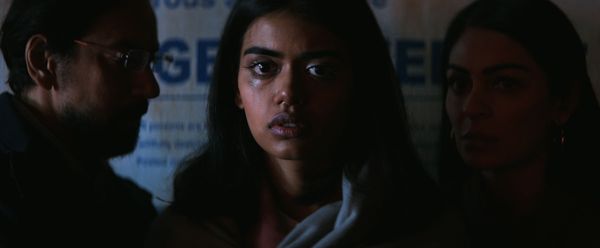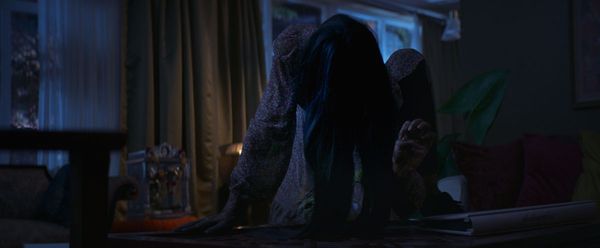“It Lives Inside”: When a horror movie defangs its demon with poor metaphors
Perhaps my greatest grievance with many Western horror films is that they’re still lacking on the diversity front. White people continue to dominate the genre, appearing as main characters and subjects of mainstream lore. Narratives featuring Black characters are right behind, although in comparison, representation as a whole remains abysmally low. And let’s not even get started on Asian folks, who are almost nonexistent (did anyone see “Umma”? No? Well there you go). Aside from appearing as background characters, Asians are rarely the primary focus in horror.
Sure, there are a handful of Hollywood remakes of select Japanese horror movies. But, original stories about Asian-centric nightmares, myths and legends are showcased only once in a blue moon. That’s why I was thrilled (no, ecstatic) to hear about “It Lives Inside,” the directorial debut from Bishal Dutta that features a South Asian protagonist. I had high hopes for the film prior to watching it at my local AMC. But instead of walking away feeling satisfied, I left my theater feeling, well, disappointed.
Dutta attempts to use the Pishacha as commentary on Sam’s real-life fear, but it’s ultimately unsuccessful.
The film itself follows Samidha (Megan Suri from “Never Have I Ever”), who is your average American high schooler. She’s well-liked by her peers, her friends and her teacher Joyce (Betty Gabriel). She’s brown, so of course, she’s incredibly studious. And she’s got a crush on the popular (yes, white) boy in town, Russ (Gage Marsh).
Samidha perceives her biggest obstacles to be her East Indian culture and heritage. It’s why she goes by the name “Sam,” which is her attempt to assimilate in a predominantly white school and neighborhood. It’s why she’s constantly at odds with her traditional, yet well-meaning mother Poorna (Neeru Bajwa). And, it’s why she’s cut ties with her former best friend Tamira (Mohana Krishnan), who’s been showing up to school looking real beat-up.
Tamira’s got dark, menacing under eye-bags. She’s often mumbling what sounds like chants to herself. And her hair is so disheveled that she looks like Samara Morgan from “The Ring.” Tamira’s also seen carrying around a glass jar that contains a creepy, black wispy-like being inside it. In an act of annoyance, Sam knocks the jar out of Tamira’s hands while they’re in the girls locker room, thus freeing the creature and sending Tamira into a frenzy.
That’s just the beginning of everything wrong with “It Lives Inside.”
Later in the movie, it’s revealed that Tamira’s creepy, black wispy-like companion is actually a Pishacha, a flesh-eating demon that appears in Hindu and Buddhist mythologies. The Pishacha, when out in the open, preys on humans, specifically feeding on their negative emotions, be it loneliness, depression or anger. The only way to contain it is to trap it in a vessel, hence the glass jar.
 It Lives Inside (Neon)Where the movie messes up is how it chooses to portray the Pishacha. The demon serves to “other” Sam as she gradually slips into insanity and takes on an appearance similar to Tamira’s. That sense of “othering” is also an all too familiar concept in many Indian-American teen stories. In fact, it’s a fear — and it’s certainly a fear of Sam’s. She rejects the school lunch that her mom packs for her, instead choosing to go hungry rather than eat Indian food in front of her white peers. She begrudgingly attends an at-home religious puja before leaving in a hurry. And, she shames her own mother for latching onto Desi customs. From the get-go, Sam does everything in her power to not be known as the brown girl in town. She’s fine with being viewed as a spectacle, which we see when one of her white friends takes a video of her speaking Hindi. But being viewed solely as the brown girl is her greatest nightmare come to life.
It Lives Inside (Neon)Where the movie messes up is how it chooses to portray the Pishacha. The demon serves to “other” Sam as she gradually slips into insanity and takes on an appearance similar to Tamira’s. That sense of “othering” is also an all too familiar concept in many Indian-American teen stories. In fact, it’s a fear — and it’s certainly a fear of Sam’s. She rejects the school lunch that her mom packs for her, instead choosing to go hungry rather than eat Indian food in front of her white peers. She begrudgingly attends an at-home religious puja before leaving in a hurry. And, she shames her own mother for latching onto Desi customs. From the get-go, Sam does everything in her power to not be known as the brown girl in town. She’s fine with being viewed as a spectacle, which we see when one of her white friends takes a video of her speaking Hindi. But being viewed solely as the brown girl is her greatest nightmare come to life.
Dutta attempts to use the Pishacha as commentary on Sam’s real-life fear, but it’s ultimately unsuccessful because we don’t see how being “othered” actually affects her. Sam isn’t alienated at school or in her neighborhood. Following the Pishacha’s vicious murder of Russ, we don’t see Sam being ditched by her friends. We don’t see her being vilified or shunned within her neighborhood — all we see is a brief clip of several onlookers looking at Sam with suspicion at the scene of the crime. We also don’t see any drastic change in her relationship with Joyce. The only consequences that Sam faces are physical; she literally looks like her soul has been sucked out of her body. She also suffers from hallucinations as the Pishacha slowly possesses her mind.
Some Pishachas have two hands, while others are understood to have multiple.
It’s also worth mentioning that Sam learns about the Pishacha through Joyce, who informs her about the demon’s origin story after doing a quick Google search. Considering the themes in Dutta’s story, wouldn’t it have made more sense if Sam learned about the Pishacha through her own parents? I think it would have, which is why that scene struck me as inconsistent with the overall plot.
“It Lives Inside” essentially has two stories in one. The primary narrative is about the Indian-American experience. The secondary is a monster story. Dutta tries to mesh both into one cohesive plot in an attempt to tell a metaphorical horror tale that casts the monster as more than just a monster. However, it doesn’t work in the end.
Want a daily wrap-up of all the news and commentary Salon has to offer? Subscribe to our morning newsletter, Crash Course.
Personally, I think the movie would have been a much better watch if Dutta focused on the mythology behind the Pishacha – mainly because Pishachas are pretty darn terrifying. The entities were first mentioned in the Mahabharata, a Sanskrit epic poem narrating the events and aftermath of the Kurukshetra War, which later served as the basis for the events of the Bhagavad Gita. Pishachas are said to be a creation of the Hindu god Brahma. They are also the sons of Krodha, “a mental state similar to wrath or fury, and foster corruption and chaos in the lives of their victims,” per an explanation from “Bloody Disgusting.”
 It Lives Inside (Neon)
It Lives Inside (Neon)
Drawings of the Pishacha show a dark, often pot-bellied, being with wide eyes and a frightening smile that displays its fang-like teeth in full view. Some Pishachas have two hands, while others are understood to have multiple. Pishachas possess the ability to shape-shift, meaning they can take on human-like appearances or, in some cases, become completely invisible. The Pishacha likes darkness and is typically said to be seen at crossroads, cemeteries, crematoriums and other locations that harbor the spirits of the dead. They also like hanging out at sites of violent catastrophe and tragedy. Pretty gnarly stuff!
As for the Pishacha’s main motives, they enjoy inflicting pain on their victims. In addition to feeding on human energy, the Pishacha may possess their victims’ thoughts, ultimately driving them to insanity. We see this in “It Lives Inside,” when a Pishacha-debilitated Sam imagines the demon lurking in her closet and in another instance, mistakes the demon for her mother when she hears crying late at night.
By the end of the movie, Sam learns to embrace her culture and even grows closer to her mother, all while her body is used as a newfound vessel for the Pishacha. As for how a whole demon was able to help her have that realization, it’s still quite unclear. Sure, Sam helps her mom set up a puja and memorizes a few Hindu prayers in preparation for defeating the Pishacha. But that’s about it.
“It Lives Inside” has its good moments, but the weak parts are too hard to dismiss to give the movie a favorable review. For now, I’ll be twiddling my thumbs, waiting for Hollywood to come out with another Indian-American horror story soon.
Read more
about horror movies:

